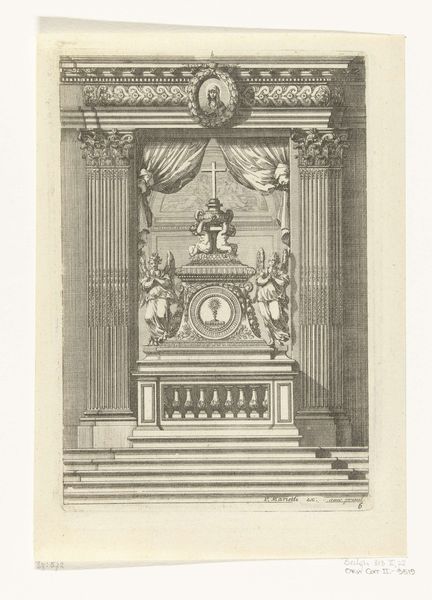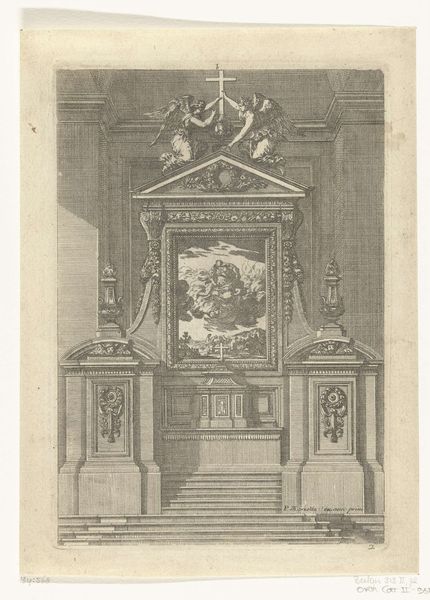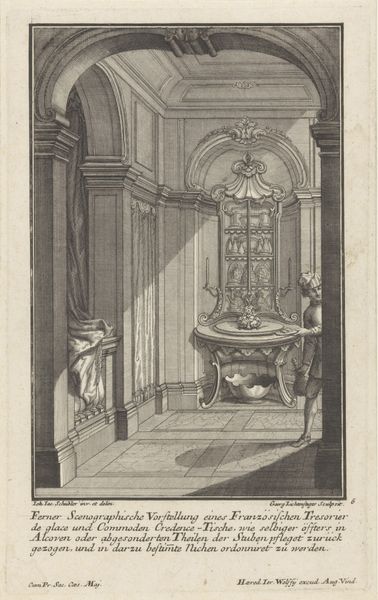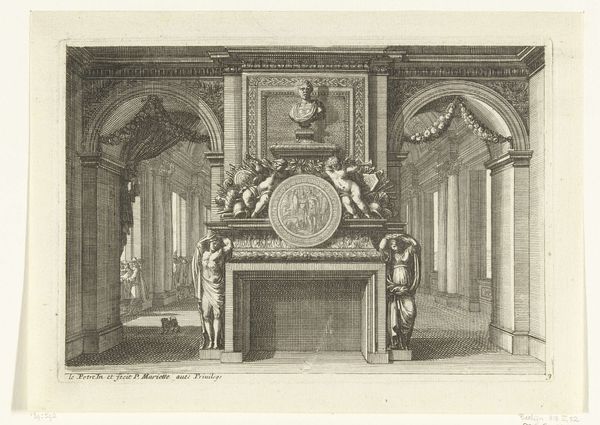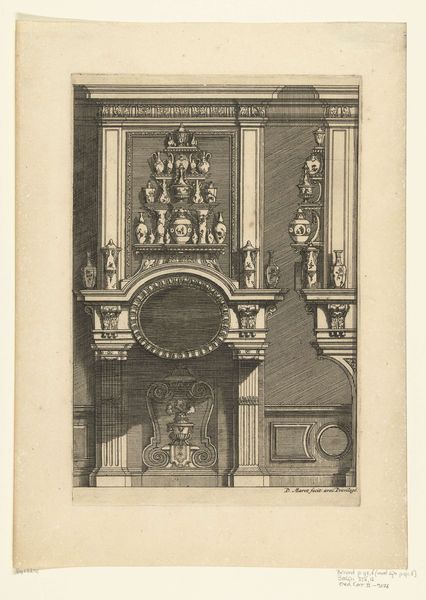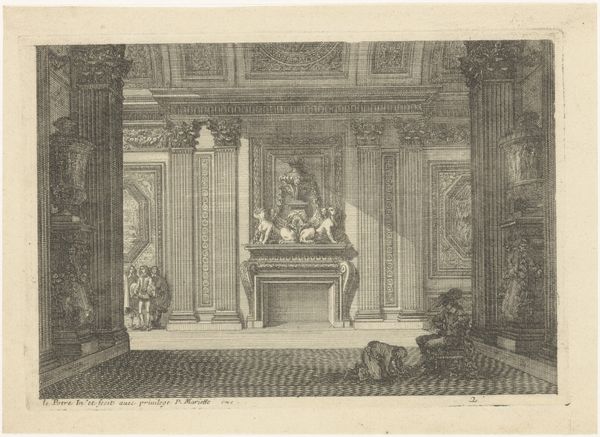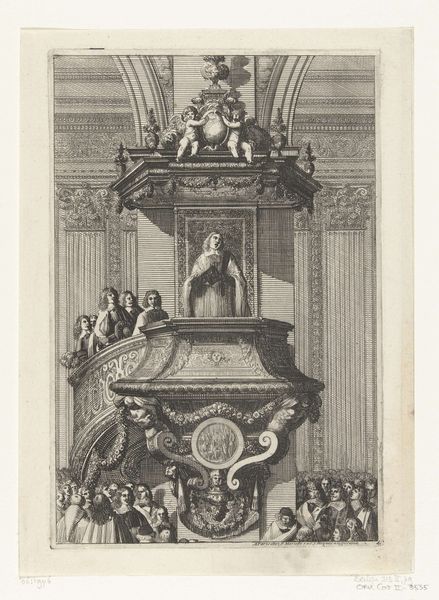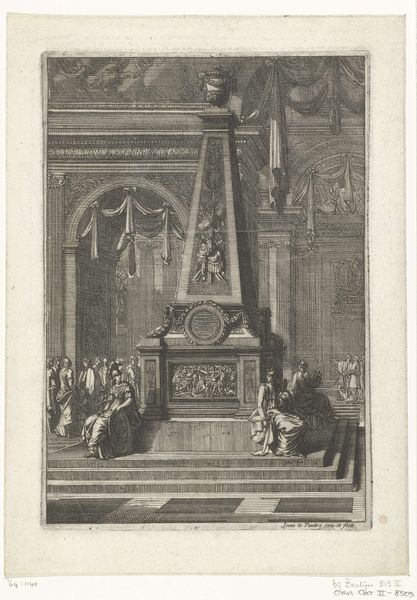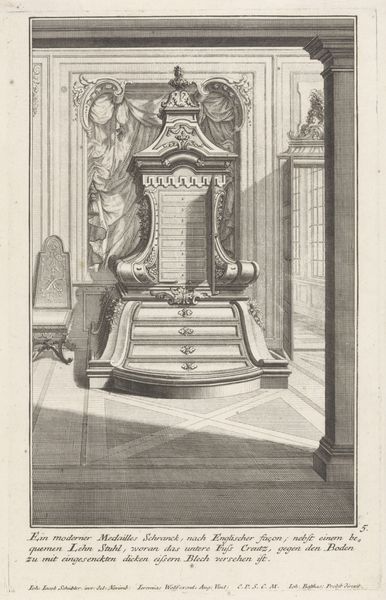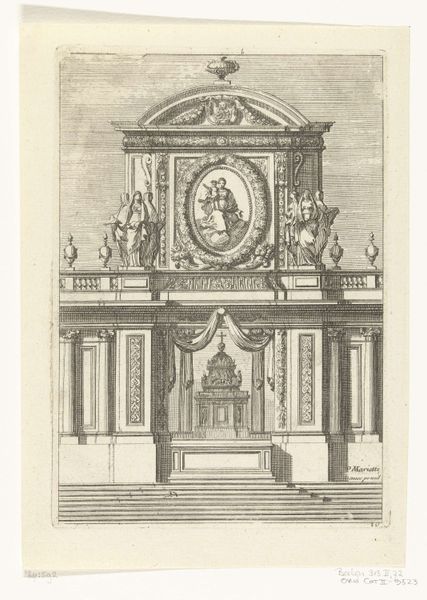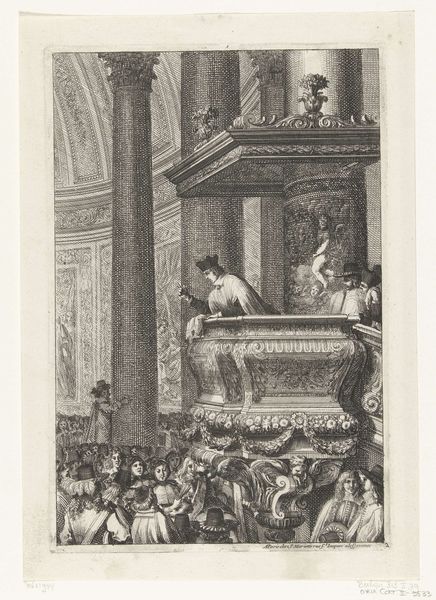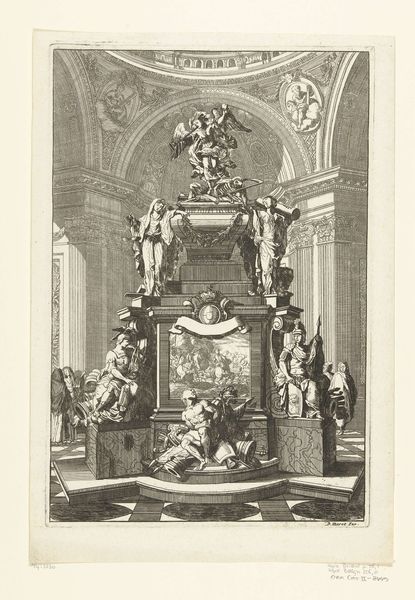
engraving, architecture
#
baroque
#
old engraving style
#
form
#
line
#
cityscape
#
history-painting
#
engraving
#
architecture
Dimensions: height 195 mm, width 136 mm
Copyright: Rijks Museum: Open Domain
Curator: The sheer volume of detail is captivating. The balance and scale feel very deliberate, quite formal. Editor: This is "Grafmonument in de vorm van sarcofaag", or "Tomb monument in the shape of a sarcophagus", an engraving by Jean Lepautre from around 1651, now residing at the Rijksmuseum. Look closely at the line work and the architectural details. What's your take on the process of production? Curator: The textures achieved through the engraved lines, especially on the sarcophagus itself, are fantastic. And the sphinxes... incredible detail for what's essentially a reproducible print. I immediately notice the clear emphasis on symmetry, anchoring my visual experience. Editor: Yes, notice how the controlled line weights create depth and volume. Consider the engraver's labor; each line meticulously placed to render the overall design. It raises questions about Lepautre’s client network and the intended audience for these prints. Was this intended for elite display or to disseminate new architectural trends more broadly? Curator: Precisely! Beyond the inherent labor, the subject of mortality intersects perfectly with the grand architecture of the sarcophagus. Note, too, the figure atop, poised, and lost in their respects. I’d argue this creates a profound sense of reverence, amplifying the monumentality. Editor: The baroque extravagance and the material choices themselves—the imagined marble and the precious metal highlights—also speak volumes about status, class, and how death becomes a theatrical production for the elite. But also, the question arises if it represents actual tombs, or is only an idealized concept. Curator: I see what you mean, especially regarding theater, yet the way light dances around the pillars and illuminates sections suggests there is an essence, something fundamentally more serious about its intentions and tone. Overall, there is an engaging paradox between gravity and light, darkness and exposure. Editor: In short, whether visualizing an aspiration or chronicling tangible reality, Lepautre prompts reflection on societal mores as much as style.
Comments
No comments
Be the first to comment and join the conversation on the ultimate creative platform.
